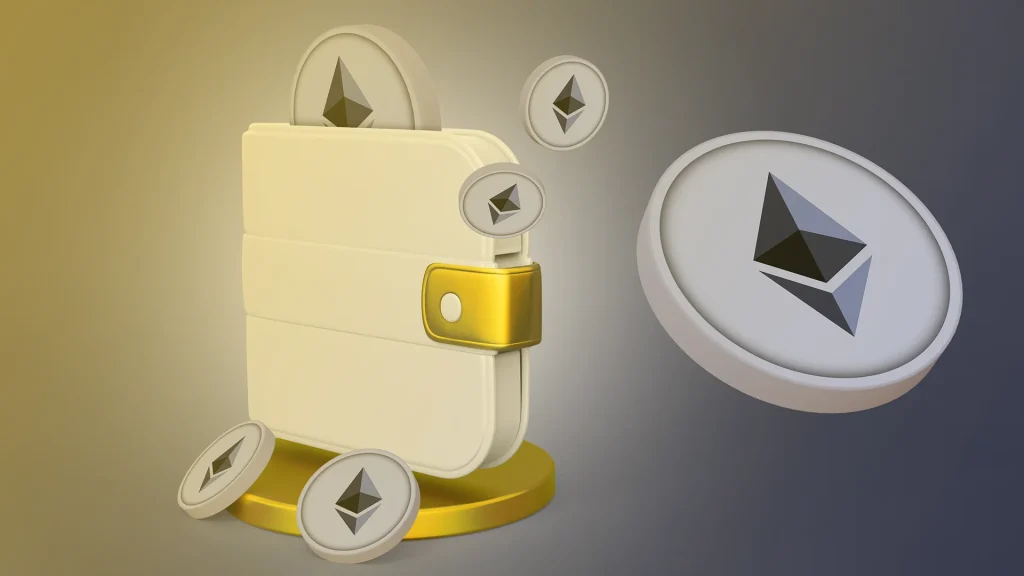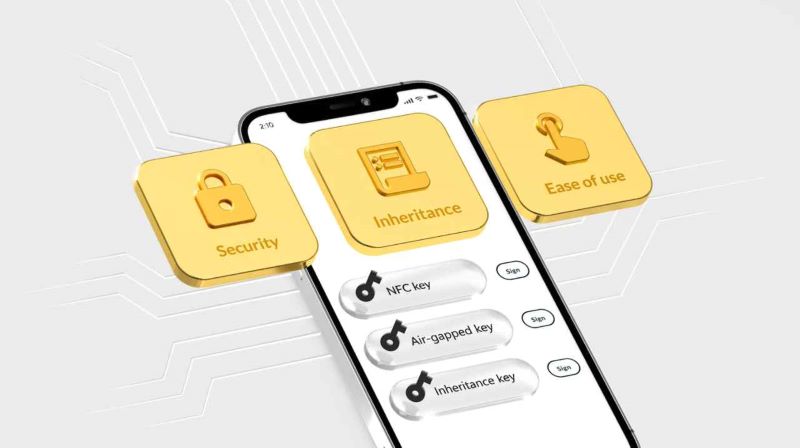Most secure crypto wallets: Your digital wealth hinges on security. The right wallet *must* shield your crypto from thieves and hackers. It’s time to ditch the worry and step up your game. This guide lights the way to the safest havens for your digital fortunes. Peek under the hood with me and learn why some wallets outclass others, how to lock your crypto up tight, and stay ahead as threats evolve. Are you ready to fortify your digital assets like never before? Let’s dive in.
Understanding the Essentials of Secure Crypto Wallets
What sets hardware wallets apart
Let’s dive into hardware wallets. They’re like safes for your digital coins. Picture this: a small, portable device that holds keys to your crypto, offline and out of reach from online thieves. Hardware wallets are the gold standard in secure cryptocurrency storage solutions. They give you control with layers of security not found in regular wallets. Plus, they’re built to resist hacking attempts.
You plug these wallets into your computer, transfer your crypto, and unplug. Your digital treasure gets locked away, offline—this is what we call ‘cold storage’. Now, your coins are safe even if your computer gets attacked, because the hardware wallet keeps your private keys separate and secure.

Most Secure Crypto Wallets
Ledger and Trezor are top brands for a reason. They pack heavy-duty security features. With these wallets, setting up is a walk in the park. You just follow simple steps to start protecting your coins. Each device has unique security perks, like the ledger nano security offers tamper-proof protection.
These wallets support backup options too. You set a recovery phrase, your crypto’s lifeline. Write this passphrase down and keep it safe. If your wallet is lost or broken, you’ll need it for the wallet recovery process. Always remember, your crypto is as safe as your backup.
The Critical Importance of Cold Storage Solutions
Now, let’s talk cold vs hot wallets. Hot wallets are connected to the internet. They’re handy for quick transactions but riskier, as they’re an easier target for hackers. Cold storage solutions, like hardware wallets, keep keys offline where no hacker can touch them.
Imagine an air-gapped security vault, completely off the grid. That’s the level of safety we’re aiming for here. Air-gapped means it never connects directly to a network. So, malware and cyber-attacks? They can’t even touch your assets.
Still, you’ve got to make sure your wallet is truly cold. Some folks use a paper wallet for cryptocurrency—essentially printing your keys and storing them physically. Sounds old school, but it works! All your digital wealth turns into a piece of paper that you can lock away.
Why do we obsess over these secure private key storage methods? Because if someone steals your keys, they steal your crypto. It’s that simple. Hardware wallets act as your personal crypto guards. They use encryption in crypto wallets to scramble your keys, making them unreadable to anyone without the right password or biometric.
Security measures for crypto include two-factor authentication crypto and biometric authentication wallets. These add an extra step or use your fingerprint to make sure only you access your wealth. The best offline crypto wallets balance easy access for you with a fortress of barriers against intruders.
Choosing the right wallet is like picking the strongest armor for your digital fortune. With hacking resistant wallets and the benefits of hardware wallets, your crypto’s not just stored—it’s fortified.
Evaluating the Best Hardware Wallets on the Market
Ledger Nano vs. Trezor: Security Showdown
When pitting Ledger Nano against Trezor, it’s like a superhero face-off. Both are titan hardware wallets but differ in security and features. Ledger Nano touts a secure chip, making it tough for hackers. Trezor counts on its open-source nature, letting anyone check for sneaky bugs. Which is safer? It depends on what you value—chip security or software transparency. Most find both wallets super reliable.
Ledger Nano backs its walls with top-notch encryption. Any thief trying to sneak in will hit a wall. Trezor gives you the power to check its code. This means you can spot any possible flaws before they bite. Both have screens to confirm transactions. This means no hacker can make moves without you seeing. They support two-factor authentication too, asking for your permission twice. That’s like double-checking who’s knocking at your door.
The Advantages of Multisignature and Air-Gapped Wallets
Multisignature wallets are like bank safes that need several keys to open. They need more than one person to agree before sending crypto. This stops one person from going rogue with the funds. They are perfect for teams and families who share a crypto stash. If you lose a key there’s no panic. You’ve got backups.
Air-gapped wallets live off the grid, no internet handshakes here. Think of them as top secret files locked in a vault. Hackers can’t reach what they can’t touch. This boosts your shield against online villains. These wallets are super for storing big amounts or for long-term hodlers. They’re a bit less convenient for daily trades or shopping though. Not all wallets are air-gapped, but it’s the gold standard for cold storage.
Choosing the best hardware, remember to check backup options. How will you recover your funds if your wallet is lost or broken? Backup options give you peace of mind. A paper wallet for cryptocurrency is a simple backup. It’s your private key printed on paper, but keep it safe from fire and water.
Your passphrase is your last line of defense. Think of it as a secret knock to get into your crypto house. A strong passphrase, along with the right hardware wallet setup, fortifies your digital fortunes against thieves.
Consider where you store your hardware wallet too. A secure private key storage spot is crucial. Imagine it as hiding your treasure map. No use having a safe chest if the map falls into the wrong hands!
The benefits of hardware wallets are clear. They guard your digital cash like an armored truck. Reputable brands like Ledger or Trezor mean you’re in safe hands. Air-gapped security and multisignature wallets are your top allies. They keep your crypto out of reach from pirates sailing the digital seas.
Picking the best hardware wallet is more than just picking a gadget. It’s about building a fortress for your future. Make sure your fortress is battle-ready. With the right walls and guards in place, your digital fortunes will stand strong.
Implementing Robust Security Measures
Encryption and Two-Factor Authentication: Your First Line of Defense
When you think of secure cryptocurrency storage solutions, two things should come to mind: encryption and two-factor authentication. Let’s talk about why they are so crucial.
Encryption is like a secret code that only you can crack. It scrambles your wallet’s info so that others can’t read it. Most hardware wallets and the best offline crypto wallets use advanced encryption. This keeps your digital coins safe even if someone tries to snoop around.
Now, I want you to imagine having a second key to your treasure chest. That’s what two-factor authentication (2FA) does for your wallet. Even if someone figures out your password, they can’t get in without this second key. Two-factor authentication crypto methods often use something you have, like your phone, to add security.
Biometric authentication wallets take this a step further. They use unique traits like fingerprints to lock down access to your stash. This way, only you can get to your coins.
Crafting a Bulletproof Backup Strategy for Your Digital Assets
Picture this: You’ve got a secret map to your treasure, and you don’t want anyone else to find it. But what if you lose the map? That’s why having a backup is so important. Hardware wallet setup includes making a recovery phrase – a secret set of words that act like a backup key for your wallet.
It’s not just about having a backup, though. You need to keep it safe too. Some people write it down on a piece of paper and store it in a safe or a safety deposit box. That’s what we call a paper wallet for cryptocurrency. Others make sure they have the backup stored in multiple secure places.
Passphrase protection takes your backup to the next level. It adds an extra word to your recovery phrase, making it even harder for thieves to crack. Think of it as a secret password for your secret map. And always remember, keep this passphrase to yourself!
Backup options for wallets might sound like a hassle, but trust me, it’s worth it. Security for your digital assets is no joke. You want to make sure that even if you lose your hardware wallet or it gets damaged, you can still get to your coins.
Finally, keep your secure private key storage in mind. That’s like the master key to your wealth, so you absolutely can’t let it fall into the wrong hands. Use the strong security offered by the very best of hardware wallets, like Ledger Nano security features, to avoid worrying about hackers.
In conclusion, every treasure needs a good defense – and for your digital fortune, that means encryption, 2FA, secure backups, and smart key management. Take these steps, and you can rest easier knowing your crypto is safe and sound.
Staying Ahead: Advanced Wallet Security in an Evolving Threat Landscape
The Risks and Mitigations for Mobile and Desktop Wallets
Keeping your crypto secure is a serious game. See, mobile and desktop wallets face threats like hacking, malware, and phishing attacks. Trust me, it’s a jungle out there. But don’t sweat – you can fight back. First off, make sure you have strong passwords and keep them to yourself. Then, add another layer of safety with two-factor authentication. This means you need two proofs to access your coins, like a password and a code from your phone.
Hardware wallets help here, too. They’re like your money’s personal vault. Ledger and Trezor are big names; they both focus hard on security. Some have screens, so you see what’s going on, which means fewer nasty surprises. Think of them as tiny, portable bank safes. Now, that’s cool.
And get this: multisignature wallets are an extra trick for your arsenal. They need more than one person’s approval to make a move. It’s like a nuclear launch – you need two keys to turn, not just one. This way, even if a hacker gets one key, they’re still locked out.
What about those times when you’re not trading or spending? That’s when cold storage crypto comes in handy. It’s keeping your coins offline, away from hacks. Paper wallet for cryptocurrency can do the trick, but remember, if you lose it or it gets damaged, your coins could be toast.
Preparing for the Future: Quantum-Resistant Wallet Technologies and Compliance Trends
Quantum computers – they sound like sci-fi, but they’re real and on the rise. And they could crack today’s encryption like a walnut. Scary stuff. But, don’t freak out yet. There are smart folks making wallets ready for this quantum leap. They’re crafting encryption that not even quantum computers can mess with. This is the next generation of safekeeping – the quantum-resistant wallets.
And hey, remember compliance? That means following rules set by bigwigs so everything’s legal and above board. With crypto, laws keep changing, so staying in the know is key. It’s not just about being secure; it’s about being smart with the rules too.
Now, setting up a hardware wallet is no rocket science but pay attention to the details. Secure private key storage means your key stays hidden – like the secret recipe to your grandma’s cookies. And always have a backup. If your wallet ever takes a hit, a good backup is your comeback king.
Last pro tip: Air-gapped security. This means your wallet never touches an online device directly. It’s like your crypto’s personal space bubble – no uninvited guests allowed.
So gear up, stay sharp, and keep those digital fortunes locked down tight. The future is all about staying one step ahead, and with the right moves, your crypto will stay just that – yours.
We’ve walked through the must-knows of secure crypto wallets, from choosing the right hardware to backing up your digital assets. We looked at top players like Ledger and Trezor and how cold storage keeps your crypto safe. We also touched on the edge you get with multisig and air-gapped wallets.
Remember, solid security starts with strong encryption and two-factor auth. Don’t overlook these. Plus, a rock-solid backup plan is your safety net.
Tech will keep changing. Mobile and desktop wallets come with risks, but you can beat them with smart moves. Stay alert to new threats like quantum hacks and keep up with the rules.
There you have it. Keep this info in your mind to make smart, safe choices with your crypto. Stay sharp and secure out there! Follow Dynamic Crypto Network to update more knowledge about Crypto.



